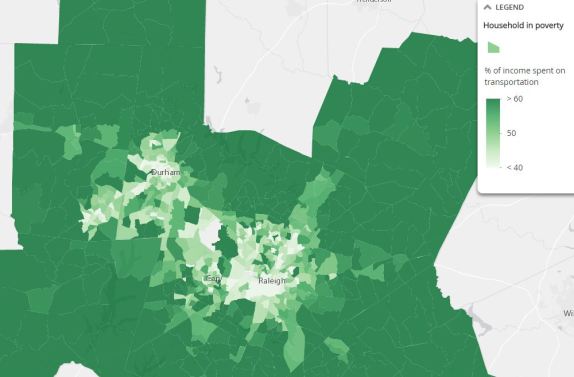We begin our analysis of transportation affordability by examining the Triangle metro area. Like many metros in North Carolina, the Triangle is very sprawling. A recent report ranked Raleigh-Cary as the 67th most sprawling metro (out of 221 analyzed), while Durham-Chapel Hill placed 31st.* Both have little mixing between residential areas and job centers – meaning that residents have to drive longer distances to employment. This, in turn, drives up transportation costs for residents.
Click the map above to go to an interactive version.





